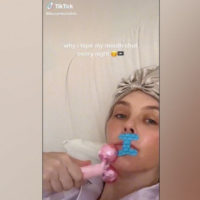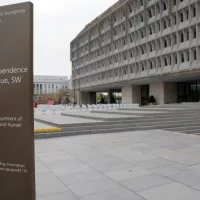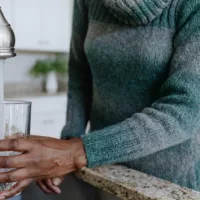
(NEW YORK) — For the past three months, Lauryn Bosstick, a Texas-based mom of two, has added a new step to her nightly routine: taping her mouth shut.
Bosstick, an entrepreneur and founder of The Skinny Confidential — a lifestyle product line, book and podcast — said she considers the technique, called mouth taping, a positive addition to her wellness routine.
She said she wakes up with more energy and feels like she can breathe better throughout the day.
“The first time I did it, I woke up with more energy,” Bosstick told ABC News’ Good Morning America. “It’s actually not hard once you start doing it. I’m surprised, but I actually want to do it each night.”
Bosstick said she first heard about mouth taping at night from multiple wellness experts she interviewed for her podcast, who each praised it as a way to reap the health benefits of nose breathing.
One of those experts, Andrew Huberman, Ph.D., a neurobiology professor at Stanford University, has touted the benefits of nasal breathing on social media and on his own podcast, “The Huberman Lab.”
Huberman proposes that breathing through the nose instead of the mouth may not only help prevent the spread of infection but may also help improve teeth hygiene, facial alignment and, at night, provide deeper sleep.
Dr. Gregory Levitin, a board-certified otolaryngologist at New York Eye and Ear Infirmary of Mount Sinai, echoes some of those beliefs, suggesting that nasal breathing has some well-researched medical benefits.
“Functionally, it’s healthier to breathe through your nose,” said Levitin. “There are many studies that have shown that not only does the nose warm the air and filters the air and moisturizes the air for us, it’s also associated with healthier sleep.”
There have been small studies linking mouth taping with modest improvements in snoring and sleep apnea, but no large-scale trial has been able to prove its benefits, for which reason it is not universally recommended.
The do’s and don’ts of mouth taping
Dr. Raj Dasgupta, fellow of the American Academy of Sleep Medicine and assistant professor of clinical medicine at the Keck School of Medicine at the University of Southern California, said people should always consult a doctor before trying mouth taping.
The main danger with the technique, he said, is if someone has undiagnosed sleep apnea and therefore would have difficulty breathing overnight.
“Before you put any tape over your mouth, talk to your doctor or health care provider to see if it’s going to be safe for you,” said Dasgupta, adding that women especially are often underdiagnosed because they don’t always present with the classic symptoms of obstructive sleep apnea, like loud snoring.
Levitin said too that a person trying mouth taping is likely trying to feel better, in which case they should seek medical care to see if there is a reason they are not properly nasal breathing.
He cautioned that mouth taping should be looked at as a diagnostic tool, not as a permanent fix or something to be done long-term.
If a person feels better after trying mouth taping for a night or two, they should see a doctor, according to Levitin, who noted there are now non-surgical options to help people breathe better.
“It’s an indicator of perhaps maybe taking the next step and actually going to see somebody determine if there’s a problem that can be fixed,” he said.
Levitin stressed that people should not use commercial tape, duct tape or any other non-medical tape for the technique. If people do decide to try mouth taping, porous tape is recommended, as it is intended for use on human skin.
Both Levitin and Dasgupta said that people can also improve their nasal breathing through lifestyle modifications, instead of resorting to mouth taping.
Meditation and yoga as well as healthy diet and consistent exercise each contribute to better breathing, the experts said.
The trend
Levitin said it’s easy to see why a tool like mouth taping may become popular, because people are trying to feel better by breathing better.
Signs that a person may not be properly breathing through their nose at night include waking up tired after a full night’s sleep or waking up with a dry mouth, sore throat or bad breath, according to Levitin.
“Millions if not billions of people don’t breathe properly every day,” he said. “It results in inefficient sleep. It makes us more tired. It also may contribute to airway disease like asthma and allergies because we’re not clearing the pathogens, or germs and dust that filter through the air.”
Bosstick said in her experience, mouth taping does not hurt, and is not as awkward as she thought it would be when she first heard it described. She places an H-shaped piece of medical tape on her lips each night.
“I think people imagine this huge piece of masking tape over their mouth. That’s not how it is,” said Bosstick. “You can essentially breathe out of the sides of your mouth, but your mouth is just closed.”
She shared her own journey with nightly mouth taping in a TikTok video that has over 21,000 likes.
Bosstick said she sees more and more people giving mouth taping a try. After doing it consistently for three months, she said she plans to keep the technique as part of her nightly routine.
“I’m a multitasker and a habit stalker,” she said. “So if I can do something while I’m asleep that’s going to make me have more energy, make me feel better and affect my facial symmetry over time and help me remain more youthful, I’m all about it.”
Copyright © 2022, ABC Audio. All rights reserved.















